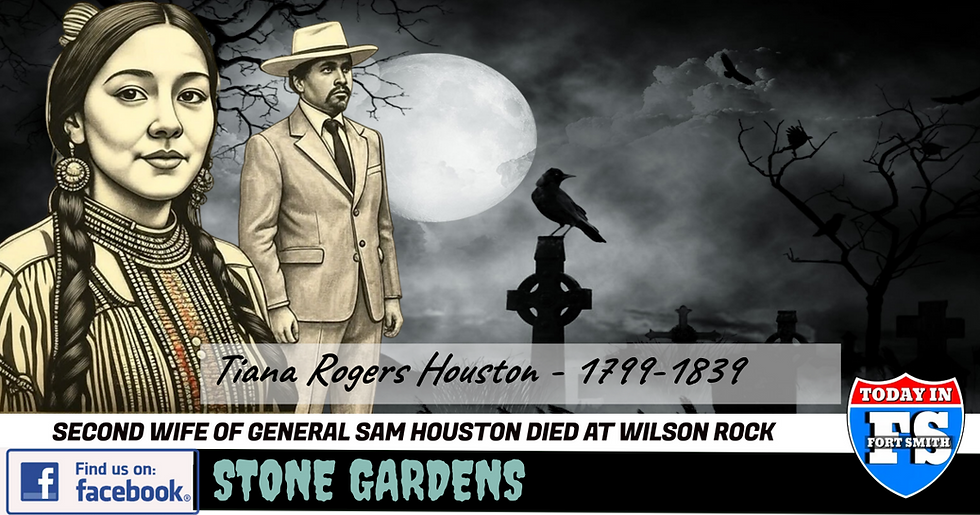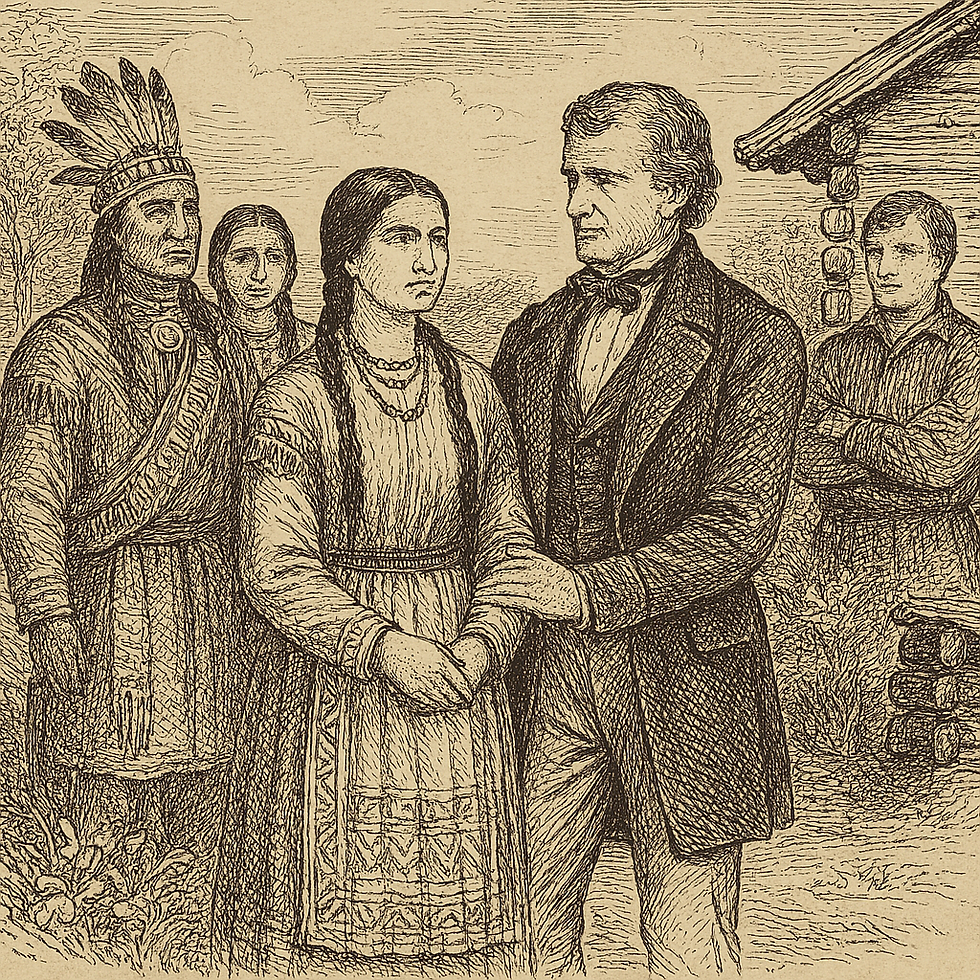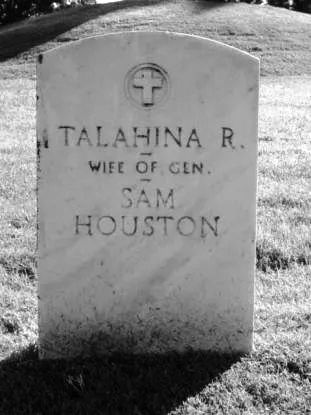Stone Gardens: Indian wife of General Sam Houston died near Spiro at Wilson Rock on December 23, 1839
- Dennis McCaslin

- 6 days ago
- 3 min read



In the early 1800s, as the American frontier pushed westward and Native nations faced increasing pressure, a Cherokee woman named Tiana Rogers quietly lived through--and shaped--a unique chapter of history.
Though often overshadowed by her husband, General Sam Houston, her life reflects the complexities of cultural identity, family, and historical memory.
Born around 1799 in Tennessee, Tiana Rogers was the daughter of Captain John “Hellfire Jack” Rogers and Jennie Due, both members of the Cherokee Nation. Her family was well known among the Cherokee who migrated westward to Arkansas and later to Indian Territory.

Tiana grew up in a household that blended Cherokee traditions with the realities of American expansion. Her siblings included influential figures such as John Rogers Jr., a Cherokee chief, and Susanna Rogers Miller.
Tiana first married David Gentry, a white trader, around 1820. After his death, she married Sam Houston in a Cherokee ceremony around 1830. At the time, Houston had resigned as governor of Tennessee and was living among the Cherokee, having been adopted into the tribe.
Their marriage was accepted within the Cherokee community but was never recognized under U.S. law. This distinction would later shape how history remembered their relationship--and how it was legally disregarded.

The couple lived near Fort Gibson, where Houston operated a trading post known as the Wigwam Neosho. Located along the Neosho River, the post served as a hub for trade between the Cherokee and American settlers. Houston sold goods such as cloth, tools, and household items, and the post became a gathering place for both Native and non-Native residents.
The name “Wigwam Neosho” reflected Houston’s efforts to blend Cherokee customs with frontier commerce. Tiana was part of this enterprise, helping maintain the household and supporting the community around them.
Their marriage lasted several years, but in 1833, Houston left Indian Territory to pursue political ambitions in Texas. He never returned to live with Tiana, though he reportedly continued to support her financially.
Four years later, in 1837, Houston married Margaret Moffette Lea, a young Baptist woman from Alabama. That marriage was formalized under U.S. law and marked a new chapter in Houston’s life.

He and Margaret had eight children and remained together until his death in 1863. The legality of his second marriage underscored the fact that his union with Tiana--though meaningful--had no standing under white man’s law, and was quietly set aside as he reentered public life.
There are no known surviving children from Tiana and Sam Houston’s marriage. After Houston’s departure, Tiana remained in the Cherokee Nation and later married Sam McGrady. Her life after Houston was marked by quiet resilience, though few records detail her later years.

Tiana died of pneumonia on December 23, 1839, at Wilson Rock, a bluff overlooking the Arkansas River in what is now Sequoyah County. The site was a known Cherokee settlement area and may have held personal or familial significance for her.
She was originally buried at Wilson Rock Cemetery, a small burial ground near the bluff. In 1904, her remains were exhumed and moved to Fort Gibson National Cemetery.

A large crowd gathered for the reburial, and observers noted the presence of a tortoise-shell comb and well-preserved bones, suggesting she was a woman of notable stature and presence.
It was during this reburial that a significant error occurred: her headstone was inscribed with the name “Talahina, Indian wife of General Sam Houston.” This name does not appear in any known records from her lifetime and is believed to be a misattribution.
Some speculate it may have been confused with a Choctaw word meaning “iron road,” or simply romanticized by later writers. Most historians agree her actual name was Tiana Rogers,
The misnaming of Tiana Rogers on her headstone reflects a broader pattern in American history--where Indigenous women’s identities were often reshaped, misrecorded, or erased.
Though she played a meaningful role in Sam Houston’s life and lived through a transformative period in Cherokee history, her story has been largely overlooked.
Today, historians and descendants continue to revisit her life, working to restore her name and legacy.
Tiana Rogers Houston was more than a footnote in Sam Houston’s biography--she was a woman of strength and dignity, navigating cultural boundaries with quiet resolve.



